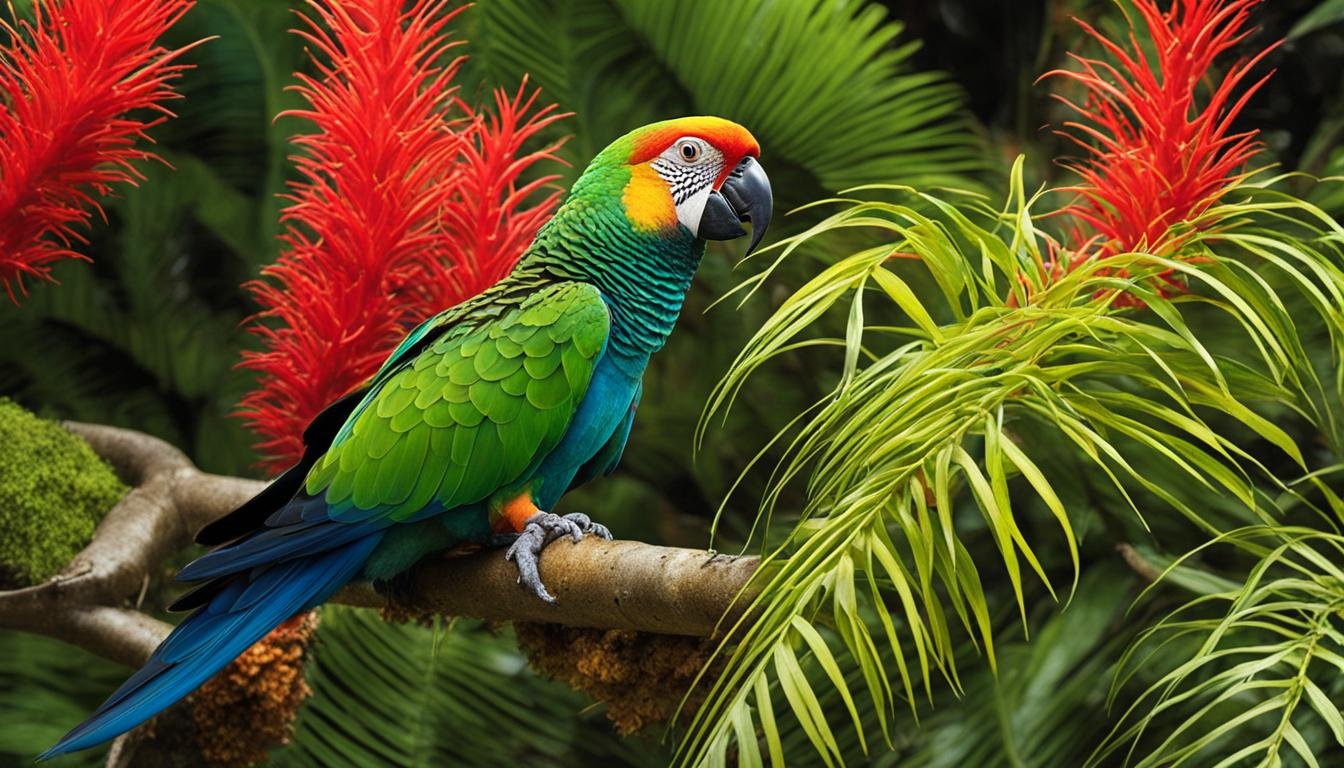Somalia Biodiversity and the Built Environment
Somalia is a country in the Horn of Africa renowned for its rich biodiversity. It is considered one of the biodiversity hotspots in the region, with an abundance of endemic plant and animal species. However, this biodiversity faces numerous challenges due to habitat loss, climate change, overexploitation, and pollution. The weak institutional capacity and limited funding for conservation efforts further hinder the protection and preservation of Somalia’s unique ecosystems.
In this article, we will delve into the key policies and governance approaches in place to conserve Somalia’s biodiversity. We will also explore the threats facing its delicate ecosystems and the impact of civil war on environmental conservation. Additionally, we will highlight the opportunities and achievements in environmental conservation, as well as future priorities and support mechanisms needed to ensure the sustainability of Somalia’s biodiversity and the built environment.
Key Takeaways:
- Somalia is considered one of the biodiversity hotspots in the Horn of Africa, with a high level of endemic plant and animal species.
- The country faces challenges such as weak institutional capacity and limited funding for conservation efforts.
- Habitat loss, climate change, overexploitation, and pollution are among the threats to Somalia’s biodiversity.
- Somalia has implemented key policies and legislation, such as the National Environment Policy and Fisheries Law, to protect its biodiversity.
- The decline in biodiversity has pushed many species to the edge of extinction, affecting the balance of ecosystems and cultural heritage.
Key Policies and Governance Approach
Somalia has implemented several policies and legislation to conserve its rich biodiversity and protect the environment. These policies play a crucial role in safeguarding Somalia’s unique ecosystems and promoting sustainable development.
National Environment Policy
The National Environment Policy serves as a comprehensive framework for environmental protection and sustainable development in Somalia. It outlines guidelines and strategies for managing natural resources, reducing pollution, and addressing climate change. This policy supports the conservation of biodiversity and emphasizes the importance of sustainable land and water management.
Fisheries Law
The Fisheries Law is another significant policy in Somalia that focuses on regulating fishing activities and promoting sustainable practices in the fishing industry. This law aims to prevent overfishing, protect fish populations, and ensure the long-term viability of marine ecosystems. By implementing sustainable fishing practices, Somalia seeks to preserve its marine biodiversity and support the livelihoods of local fishing communities.
Wildlife Policy and Wildlife Strategic Plan
Somalia has a dedicated Wildlife Policy and Wildlife Strategic Plan aimed at biodiversity conservation and habitat preservation. These policies guide efforts to protect and manage wildlife populations, while also addressing threats such as habitat loss and illegal wildlife trade. By implementing effective wildlife conservation strategies, Somalia aims to safeguard its unique animal species and their habitats.
Forestry and Wildlife Act
The Forestry and Wildlife Act is a crucial legislation that plays a vital role in protecting Somalia’s forests and wildlife. This act establishes regulations and guidelines for sustainable forestry practices and habitat conservation. It also provides a framework for managing protected areas and mitigating the impacts of deforestation and habitat degradation.
National Charcoal Policy
The National Charcoal Policy is designed to combat deforestation and promote sustainable alternatives to charcoal production in Somalia. This policy aims to regulate and reduce the unsustainable production and use of charcoal, which has been a significant driver of deforestation in the country. By implementing alternative energy sources and sustainable land management practices, Somalia strives to protect its forests and reduce carbon emissions.
Overall, these key policies and legislation demonstrate Somalia’s commitment to environmental conservation and sustainable development. By implementing and enforcing these measures, Somalia aims to protect its rich biodiversity, preserve ecosystems, and secure a sustainable future for its people.
Biodiversity Facts
Somalia is renowned for its rich biodiversity, home to a vast array of endemic species that contribute to its unique ecological landscape. The country’s diverse ecosystems support approximately 2,750 endemic plant species and 24 endemic bird species, showcasing its remarkable natural heritage.
However, there is growing concern over the decline in biodiversity and the degradation of essential ecosystems in Somalia. Multiple sectors, including forestry, agriculture, rangelands, marine and coastal areas, wetlands, and wildlife habitats, have experienced noticeable declines in biodiversity.
The decline in biodiversity can be attributed to various threats that jeopardize the delicate balance of Somalia’s ecosystems. These threats include habitat loss and degradation, climate change, overexploitation, pollution, invasive species, civil war, and tsunamis, all of which contribute to the decline in biodiversity levels.
| Threats to Biodiversity in Somalia |
|---|
| Habitat loss and degradation |
| Climate change |
| Overexploitation |
| Pollution |
| Invasive species |
| Civil war |
| Tsunamis |
These threats not only endanger Somalia’s unique endemic species but also disrupt the intricate web of life within its ecosystems. It is crucial to address these challenges and prioritize the conservation and restoration of biodiversity to ensure a sustainable future for Somalia’s natural heritage.
By implementing effective conservation strategies, raising awareness, and promoting sustainable practices, it is possible to mitigate the threats to biodiversity and safeguard Somalia’s natural resources for future generations. Through collaborative efforts between government bodies, local communities, and international organizations, we can strive towards a harmonious balance between human development and the preservation of Somalia’s precious biodiversity.
Threats to Biodiversity
Habitat loss and degradation pose a significant threat to biodiversity in Somalia. Deforestation and land conversion for agriculture have led to the destruction of vital habitats, exacerbating the problem. This habitat loss, combined with the impact of climate change, further accelerates the decline of Somalia’s unique plant and animal species.
Overexploitation of natural resources, such as hunting and fishing, contributes to the depletion of critical species. Unsustainable practices lead to the decline in important plant populations and the disruption of food chains, negatively impacting the overall balance of ecosystems.
Pollution is another major threat to biodiversity in Somalia. Industrial activities and improper waste disposal contaminate ecosystems, harming both flora and fauna. The release of pollutants can disrupt the natural equilibrium, leading to the decline of vulnerable species and the degradation of habitats.
The introduction of invasive alien species is yet another danger to Somalia’s biodiversity. These species, often outcompeting native plants and animals, disrupt the delicate balance of ecosystems. Invasive species can displace indigenous flora and fauna, leading to habitat degradation and the loss of habitat specialists.
The civil war in Somalia has had a detrimental impact on biodiversity. Environmental governance mechanisms have been disrupted, leading to increased illegal activities that threaten wildlife and their habitats. The conflict has further hampered conservation efforts and hindered effective environmental management.
In Somalia, habitat loss and degradation, climate change, overexploitation, pollution, invasive species, and the impact of civil war contribute to the decline of biodiversity and the degradation of crucial ecosystems. Addressing these threats requires a multifaceted approach, combining effective conservation strategies, sustainable resource management, and improved environmental governance.
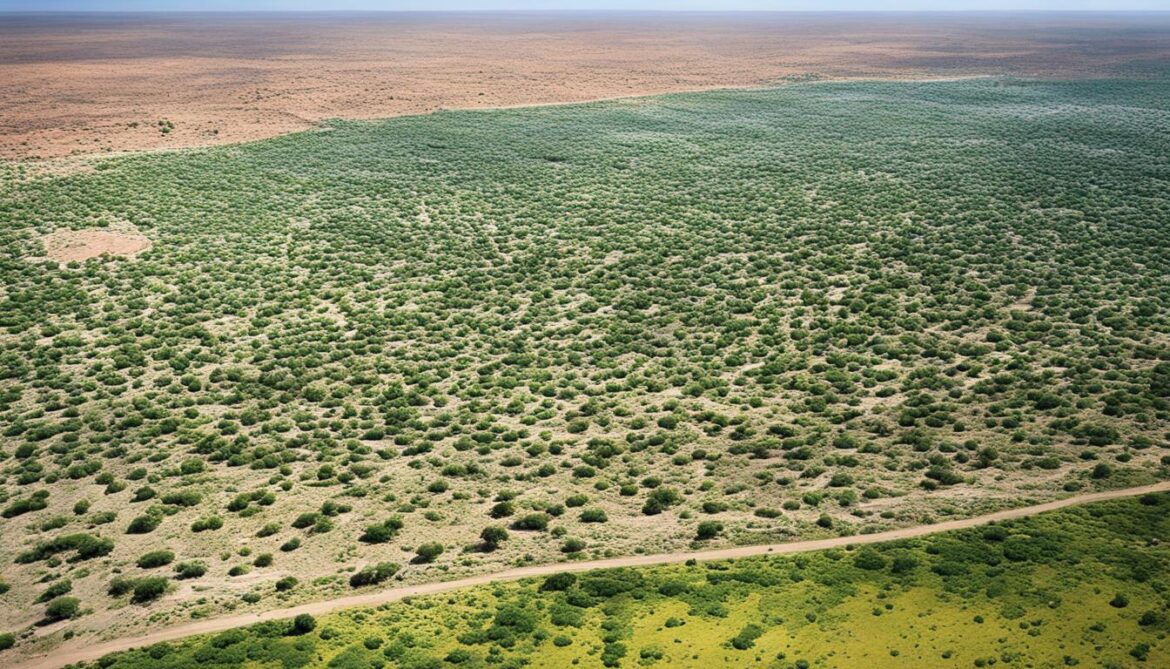
The image above depicts the impact of habitat loss and degradation on biodiversity, highlighting the interconnectedness of ecosystems and the need for conservation efforts.
By understanding these threats and implementing proactive measures, Somalia can work towards protecting its unique biodiversity and ensuring a sustainable future for both its wildlife and human population.
| Threats to Biodiversity | Impact |
|---|---|
| Habitat loss and degradation | Displacement of species, disruption of ecosystems |
| Climate change | Altered habitats, changes in species distribution |
| Overexploitation | Depletion of important species, disruption of food chains |
| Pollution | Contamination of ecosystems, harm to flora and fauna |
| Invasive species | Competition with native species, habitat disruption |
| Civil war | Disrupted environmental governance, increased illegal activities |
The Extinction Crisis
The decline in biodiversity in Somalia has led to a troubling situation with the extinction of various species. Iconic species such as the Somali wild ass, black rhino, lion, and Swayne’s hartebeest have tragically been eradicated from most parts of the country. The once thriving population of wild asses has experienced a drastic decline. Unsustainable fishing practices and illegal fishing activities have significantly contributed to the decline in marine resources, including devastating damage to coral reefs. The loss of these precious species not only disrupts the delicate balance of ecosystems but also erodes the cultural and ecological heritage of Somalia.
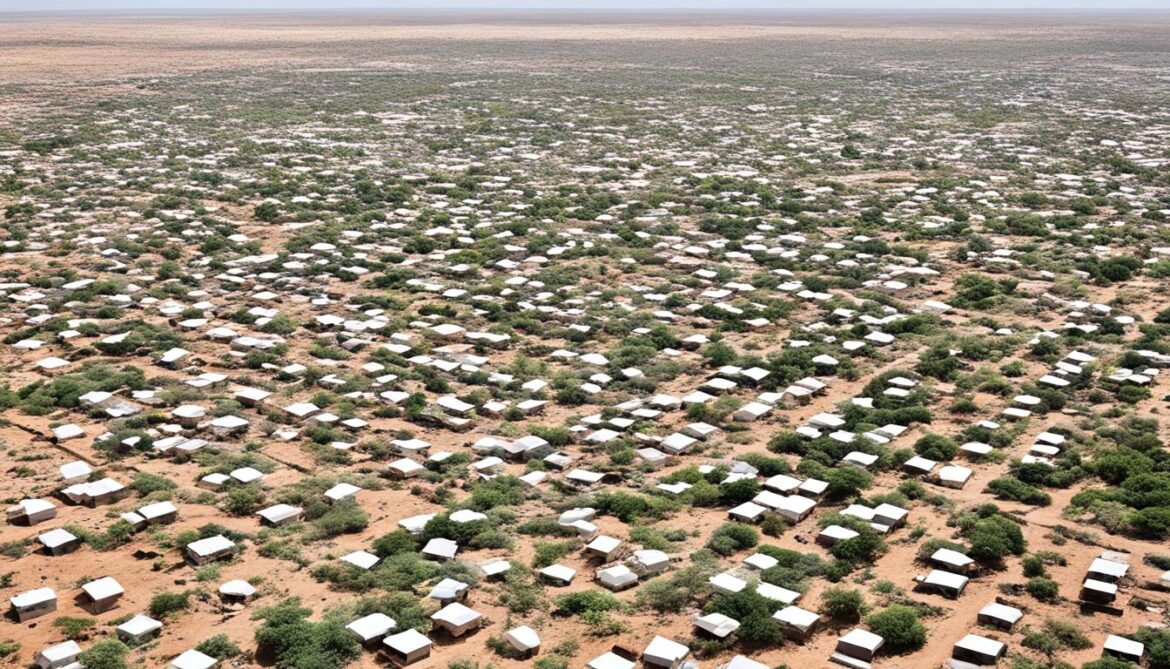
Endemic Species
Somalia boasts a diverse range of endemic plant and bird species that have adapted to its unique environments. These endemic species play a crucial role in maintaining the country’s ecological balance and are an important part of its natural heritage.
Endemic plant species in Somalia:
- Boswellia sacra: Also known as the frankincense tree, Boswellia sacra is endemic to Somalia and is renowned for its aromatic resin, which has been used for centuries in incense and perfumes.
- Boswellia frereana: Another endemic tree that produces frankincense, Boswellia frereana is a valuable natural resource in Somalia’s arid regions.
- Commiphora myrrha: Endemic to Somalia, Commiphora myrrha is a small tree known for producing myrrh, a resin historically used for its medicinal and aromatic properties.
- Commiphora guidottii: This endemic tree in Somalia also produces myrrh and is commonly found in the country’s dry and semi-arid regions.
Endemic bird species in Somalia:
- Warsangli linnet: The Warsangli linnet is an endemic bird species found in Somalia. It inhabits grasslands and shrublands in the northeast region of the country.
- Djibouti francolin: Endemic to Somalia and Djibouti, the Djibouti francolin is a rare bird species that has adapted to the unique semi-desert environments of the region.

Land Degradation and Environmental Concerns
Land degradation is a significant environmental issue in Somalia, closely linked to desertification, drought, and unsustainable livestock and agricultural practices. These factors contribute to the loss of fertile land and undermine food production, exacerbating the problem of food insecurity in the country.
In addition to land degradation, Somalia also faces concerns related to hazardous waste. Improper disposal of hazardous materials can contaminate soil and water sources, posing risks to human health and the environment. Addressing hazardous waste management is crucial for protecting Somalia’s ecosystems and ensuring the well-being of its communities.
Marine and Coastal Management
Somalia’s coastal areas are diverse and ecologically significant, providing habitat for a wide range of marine species. However, the lack of effective marine and coastal management increases the vulnerability of these ecosystems to pollution, overfishing, and habitat destruction. Implementing sustainable practices and conservation measures is essential for preserving the biodiversity of Somalia’s marine and coastal areas.
Natural Disasters in Somalia
Somalia is prone to natural disasters, including droughts, floods, and cyclones. These events can have devastating impacts on the environment, exacerbating land degradation, destroying infrastructure, and displacing communities. Building resilience and preparedness through effective disaster management strategies is crucial for minimizing the adverse effects of natural disasters and protecting Somalia’s environment and population.
Overall, addressing land degradation, promoting sustainable land and agricultural practices, managing hazardous waste, implementing effective marine and coastal management, and mitigating and managing natural disasters are critical components of environmental conservation in Somalia. By prioritizing these concerns and adopting appropriate measures, Somalia can work towards sustainable development and the preservation of its valuable ecosystems.
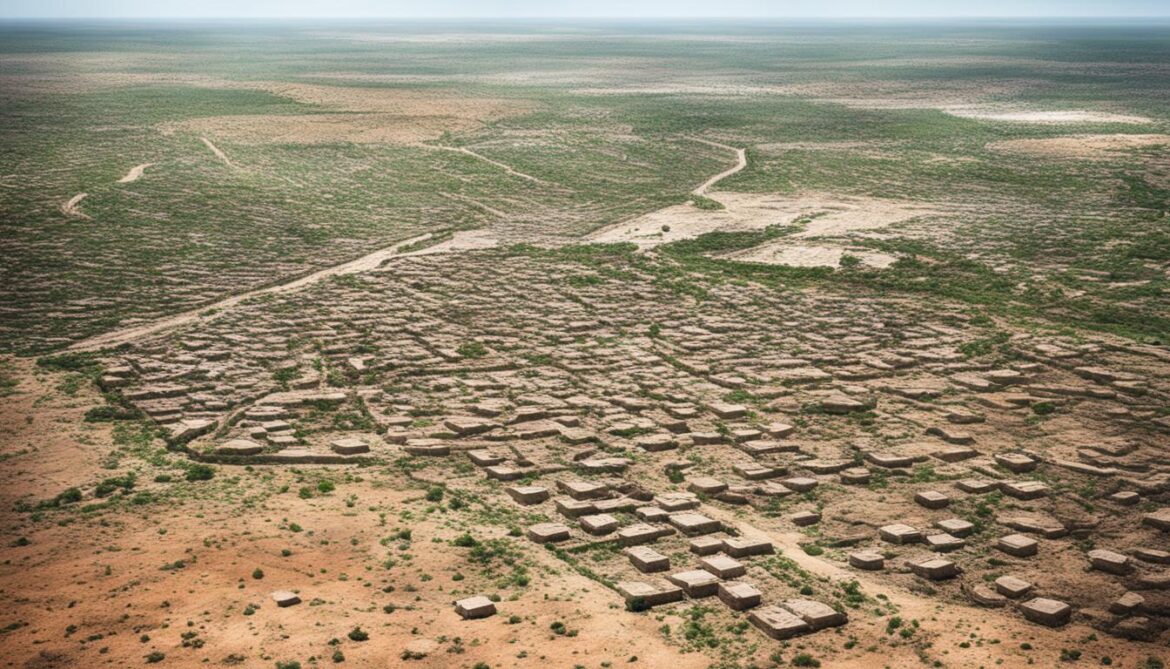
Joint Needs Assessment and Environmental Information
The Joint Needs Assessment (JNA) for Somalia, conducted by the United Nations Environment Programme (UNEP), played a crucial role in identifying and reporting on the pressing environmental issues in the country. Somalia, due to its protracted civil war, has faced considerable challenges in gathering up-to-date environmental data. However, the JNA served as an important step towards addressing this informational gap.
“The JNA aimed to collect comprehensive environmental data, empowering the stakeholders involved to make informed decisions about Somalia’s natural resources and ecosystems,” said Dr. Sarah Burns, lead researcher at UNEP. “By highlighting the urgent need for environmental information, we can work towards sustainable solutions to conserve and rehabilitate Somalia’s fragile environment.”
The JNA encompassed an extensive range of data collection and analysis efforts. It focused on assessing various aspects of Somalia’s environment, including biodiversity, water resources, waste management, climate change, and land degradation. The assessment helped in understanding the interconnectedness of these environmental challenges and their implications for sustainable development.
One of the significant outcomes of the JNA was the establishment of the Somali Environmental Information Center (SEIC). The SEIC serves as a central repository for environmental data, providing access to researchers, policymakers, and the public. It plays a crucial role in enabling evidence-based decision-making and supporting the development of effective environmental policies and regulations in Somalia.
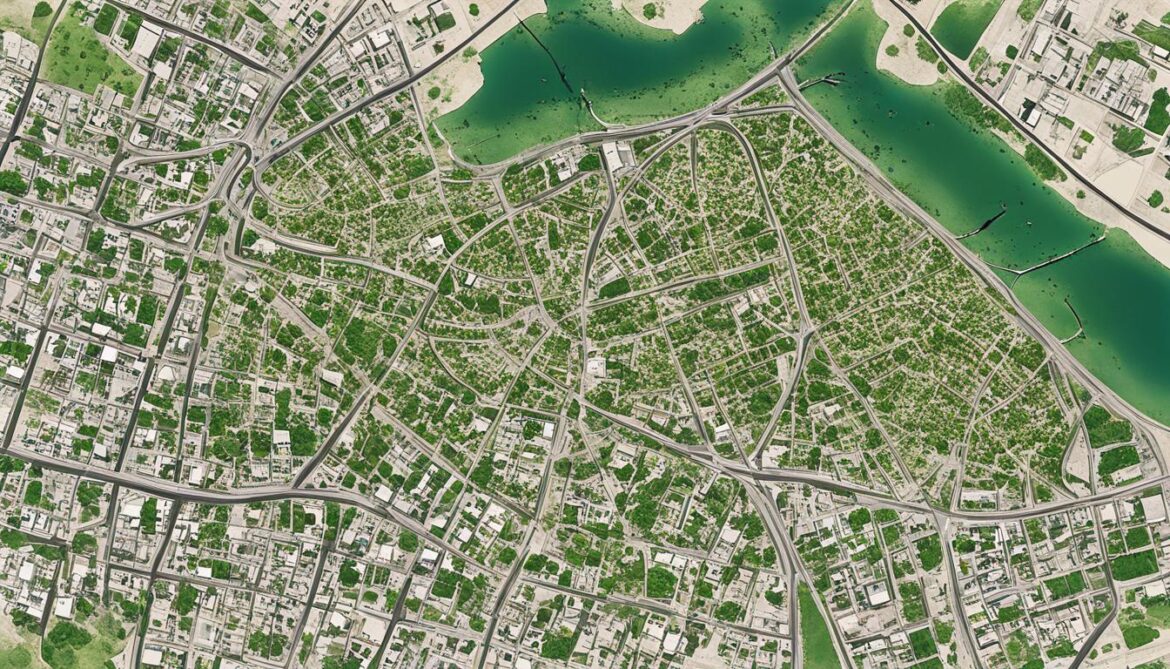
Key Findings from the Joint Needs Assessment:
- The availability of environmental data in Somalia is limited due to the protracted civil war.
- There is a need for ongoing data collection and monitoring to assess environmental trends and guide conservation efforts.
- The establishment of the Somali Environmental Information Center (SEIC) is a significant step towards improving access to environmental data.
- Collaboration between national and international partners is essential to strengthen the capacity for environmental data collection and analysis.
The JNA and the subsequent establishment of the SEIC have opened avenues for collaboration and knowledge sharing in the field of environmental management in Somalia. By continually updating and expanding the available environmental data, stakeholders can develop evidence-based strategies and initiatives to address the pressing environmental challenges facing the country.
| Benefits of the JNA and SEIC | Challenges in Environmental Data Collection |
|---|---|
| Facilitates evidence-based decision-making | Limited access to remote and conflict-affected areas |
| Strengthens environmental policies and regulations | Inadequate monitoring infrastructure and resources |
| Supports collaboration and knowledge sharing | Fragmented institutional frameworks |
| Enhances capacity for environmental data collection and analysis | Lack of technical expertise |
Opportunities and Achievements in Environmental Conservation
Throughout Somalia, there have been significant achievements and initiatives in environmental conservation. These projects, undertaken by various stakeholders, are aimed at addressing the environmental challenges faced by the country and promoting sustainable development.
Improving Livelihoods and Restoring Ecosystems
Environmental conservation projects in Somalia have focused on improving the livelihoods of local communities while simultaneously restoring and protecting ecosystems. By implementing sustainable practices in agriculture, such as agroforestry and organic farming, communities have been able to enhance food security while minimizing the impact on the environment. Initiatives targeting reforestation and land rehabilitation have been successful in restoring degraded lands and preserving vital habitats for wildlife.
Tackling Climate Security and Developing National Action Plans
Recognizing the importance of climate security, Somalia has embarked on projects to address the impacts of climate change. These projects focus on building resilience in vulnerable communities through the implementation of adaptation measures, including the establishment of water management systems and the promotion of climate-smart agricultural practices. Furthermore, national action plans have been developed to guide the country’s efforts in mitigating greenhouse gas emissions and transitioning towards a low-carbon economy.
Partnerships with NGOs and International Organizations
Collaboration with non-governmental organizations (NGOs) and international organizations has played a crucial role in promoting environmental conservation in Somalia. Partnerships have been formed to support capacity-building initiatives, provide technical expertise, and secure funding for conservation projects. These partnerships have facilitated the implementation of effective strategies for biodiversity protection, habitat restoration, and conservation education.
“Partnerships with NGOs and international organizations have been instrumental in driving forward environmental conservation efforts in Somalia. By working together, we can achieve significant positive impact for both the environment and local communities.”
Protecting Biodiversity and Addressing Environmental Challenges
The achievements in environmental conservation in Somalia are crucial for protecting the country’s rich biodiversity. By focusing on the preservation of endemic species, the restoration of critical habitats, and the implementation of sustainable practices, Somalia is working towards safeguarding its unique natural heritage for future generations.
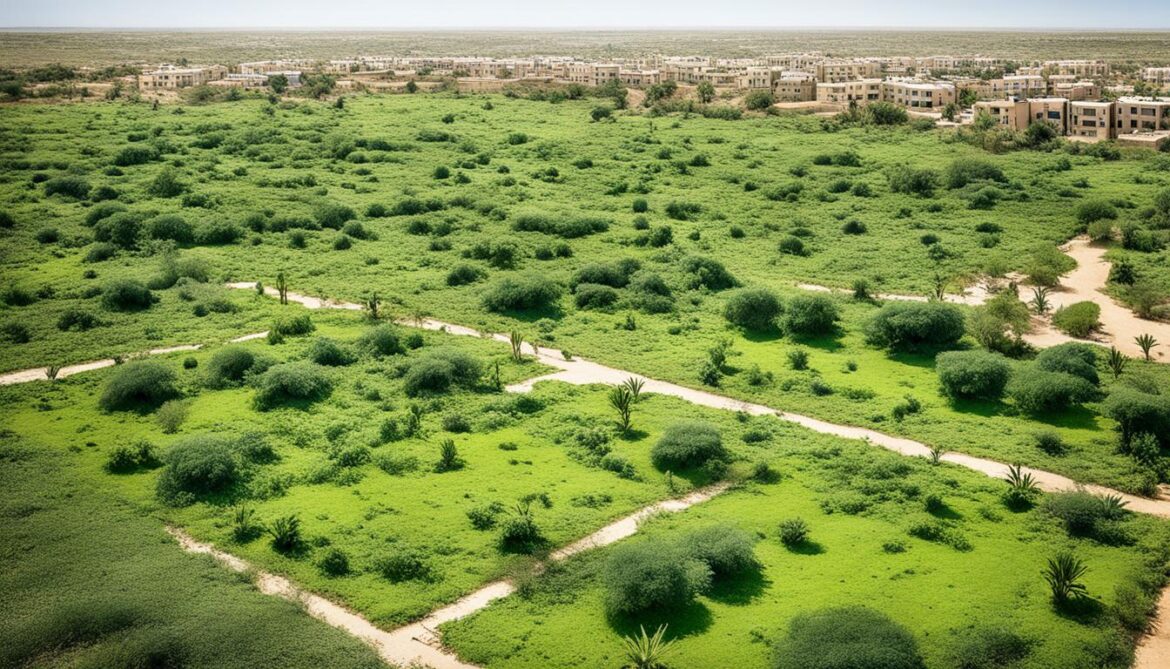
| Environmental Achievements | Description |
|---|---|
| Community-based Conservation Projects | Empowering local communities to actively participate in the conservation and management of their natural resources. |
| Protected Area Establishment | Creating designated protected areas to preserve critical habitats and promote the recovery of endangered species. |
| Environmental Education Programs | Raising awareness among communities about the importance of environmental conservation and promoting sustainable practices. |
| Sustainable Fisheries Management | Implementing regulations and practices to ensure the long-term viability of fish stocks while supporting the livelihoods of fishing communities. |
These achievements and initiatives represent a commitment to addressing the environmental challenges faced by Somalia. Moving forward, it is essential to build upon these successes, secure continued funding and support, and foster collaboration to ensure the long-term sustainability of environmental conservation efforts in the country.
Future Priorities and Support Mechanisms
As Somalia strives to protect and conserve its unique biodiversity and built environment, several future priorities and support mechanisms have been identified to guide environmental conservation efforts.
Institutional Strengthening and Capacity-Building
In order to effectively implement and enforce environmental protection measures, institutional strengthening and capacity-building are vital. This includes enhancing the capacity and expertise of government agencies, local authorities, and relevant stakeholders involved in environmental conservation.
Public Awareness-Raising
Increasing public awareness about the importance of environmental conservation is crucial for fostering a culture of sustainability in Somalia. Through targeted campaigns, educational programs, and community engagement, the public can be empowered to actively participate in conservation efforts.
Mainstreaming of Environmental Concerns
Integrating environmental concerns into various sectors and decision-making processes is essential for sustainable development. By incorporating environmental considerations into policies, plans, and development projects, Somalia can ensure that environmental protection becomes a priority across all sectors.
Community-Based Conservation
Engaging local communities in conservation efforts is key to achieving long-term success. Community-based conservation initiatives, such as establishing community-managed protected areas and promoting sustainable livelihoods, can empower communities to actively contribute to biodiversity conservation.
Development of Environmental Impact Assessments and Strategic Plans
Implementing robust environmental impact assessments and strategic plans is crucial for identifying potential environmental risks and integrating mitigation measures. These tools enable informed decision-making, ensuring that development activities minimize negative environmental impacts.
“By prioritizing conservation and sustainability, Somalia can safeguard its biodiversity and promote environmentally friendly urban growth.”
Support Mechanisms for Environmental Conservation
Achieving the future priorities outlined above requires the implementation of various support mechanisms for environmental conservation in Somalia:
- Legislation: Enacting strong environmental laws and regulations is essential for enforcing environmental protection measures and holding responsible parties accountable.
- Funding: Adequate funding from both domestic and international sources is crucial to support conservation initiatives, capacity-building efforts, and infrastructure development.
- Capacity-Building: Investing in the training and development of local professionals and organizations involved in environmental conservation is essential for building expertise and effective implementation of conservation strategies.
- Coordination: Coordinating efforts among different government agencies, NGOs, and international organizations is vital to avoid duplication of efforts and maximize the impact of conservation initiatives.
- Mainstreaming Efforts: Integrating environmental conservation into national policies, strategies, and development plans ensures a holistic approach to sustainability and fosters cross-sectoral collaboration.
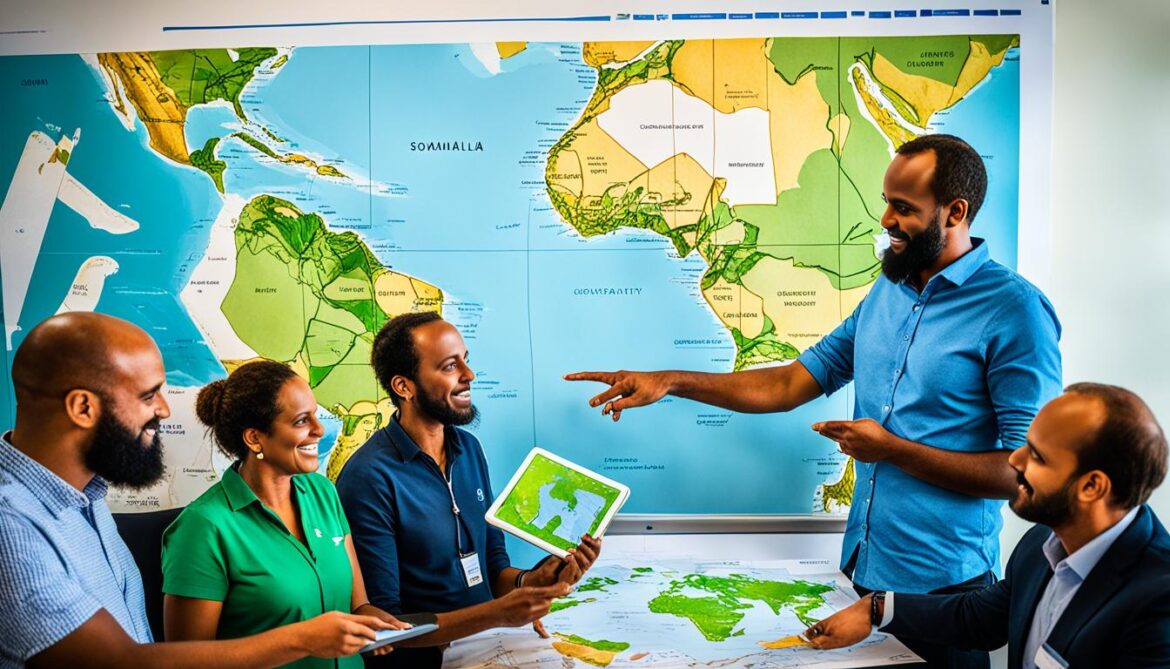
| Support Mechanisms | Description |
|---|---|
| Legislation | Enacting and enforcing environmental laws and regulations to protect biodiversity and ecosystems. |
| Funding | Securing financial resources for conservation projects, capacity-building, and infrastructure development. |
| Capacity-Building | Investing in the training and development of local professionals and organizations involved in conservation efforts. |
| Coordination | Facilitating collaboration and coordination among government agencies, NGOs, and international organizations. |
| Mainstreaming Efforts | Integrating environmental concerns into national policies, strategies, and development plans to ensure sustainability. |
Conclusion
Somalia’s biodiversity and the built environment are facing significant challenges due to habitat loss, climate change, overexploitation, pollution, invasive species, and the impact of civil war. However, there are ongoing efforts to protect and conserve the country’s unique species and ecosystems through the implementation of policies, legislation, community involvement, and wildlife initiatives.
To effectively address these challenges, it is crucial to strengthen the institutional capacity and secure adequate resources for environmental protection measures in Somalia. Collaboration among stakeholders is also essential for the successful implementation and enforcement of conservation efforts.
By prioritizing conservation and sustainability, Somalia can safeguard its biodiversity and promote environmentally friendly urban growth. This requires a focus on strengthening institutions, securing resources, and fostering collaboration to ensure the long-term protection of Somalia’s precious natural resources.








